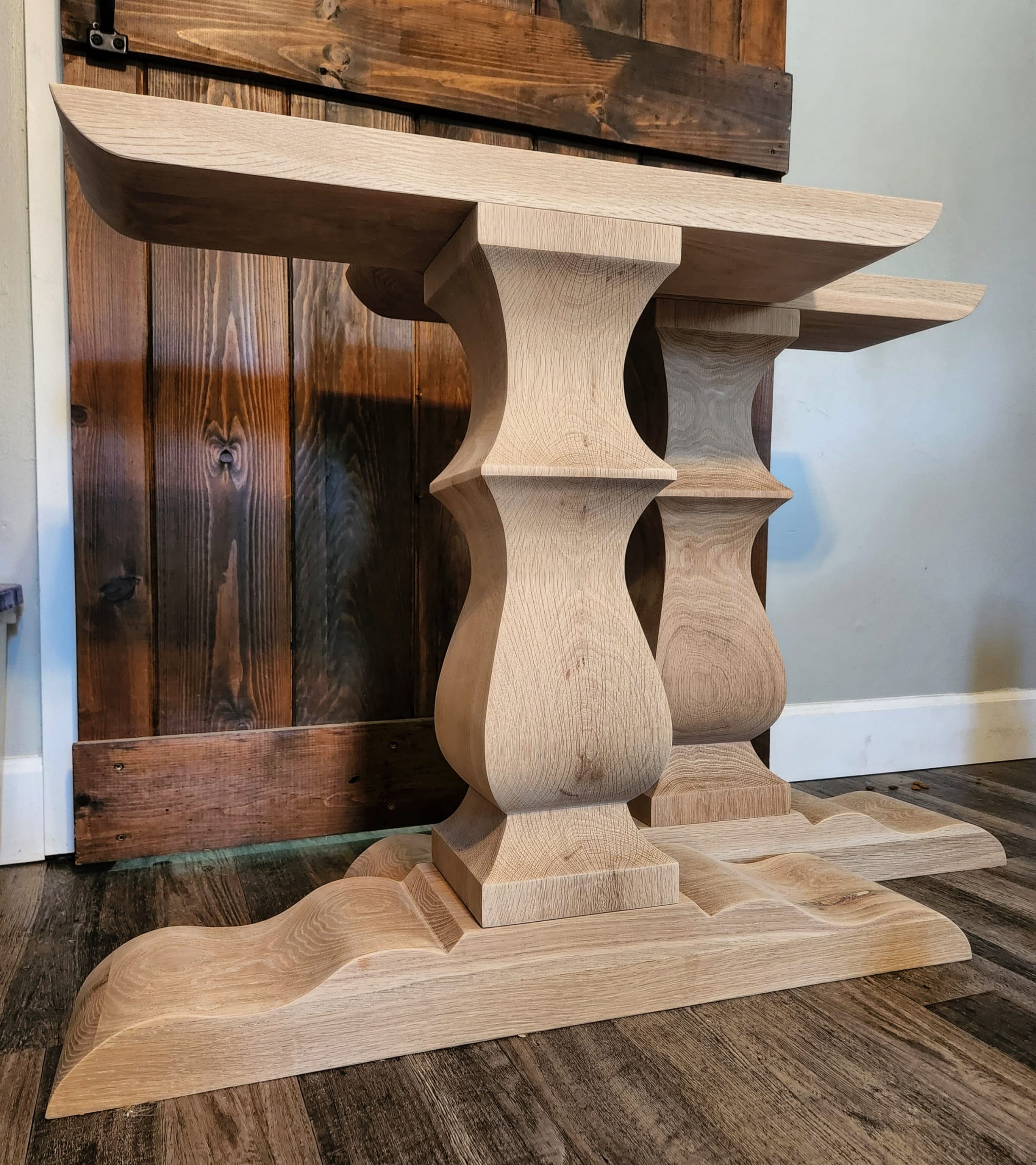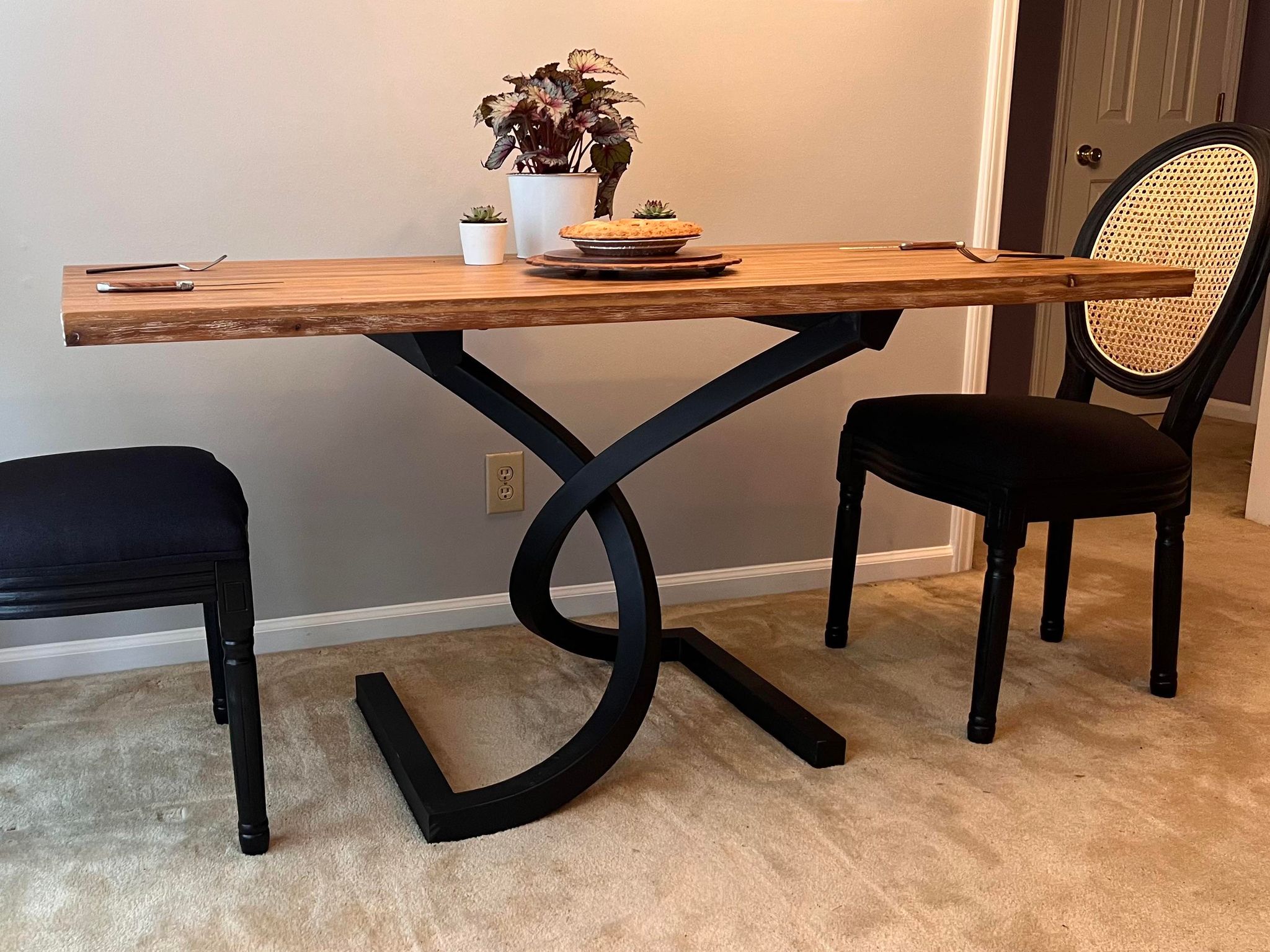Produce Sensational Furnishings with Elegant Dining Table Legs Wood Choices
Produce Sensational Furnishings with Elegant Dining Table Legs Wood Choices
Blog Article
Discovering the Various Kinds Of Eating Table Legs Wood for Your Eating Room
The selection of dining table legs wood can profoundly affect both the aesthetic and functional qualities of your eating area. Strong timber alternatives, such as oak and walnut, supply a classic look with unparalleled sturdiness, while engineered wood alternatives provide innovative layouts that mimic the splendor of natural grains.
Solid Wood Options

Additionally, strong timber is renowned for its toughness and durability. Unlike engineered materials, solid wood is much less vulnerable to bending and damages gradually when appropriately kept. This makes it an ideal choice for family members or those who regularly hold celebrations. Each piece of solid wood is unique, showcasing individual characteristics that include in the appeal and personality of the table.
Additionally, strong timber can be ended up in countless means, varying from all-natural oils to discolored surfaces, permitting homeowners to individualize their furnishings to match their style. In recap, choosing solid timber for eating table legs not just ensures architectural honesty however also enhances the visual charm of the dining area, making it a rewarding investment for any type of home.
Engineered Timber Alternatives

Plywood, created from multiple layers of timber veneer, is particularly strong and secure, making it an exceptional choice for eating table legs. Its split composition permits it to stand up to changes in moisture and temperature much better than conventional solid wood. MDF, on the various other hand, uses a smooth surface for paint or veneering, making it possible for developers to accomplish a sleek look while preserving architectural honesty.
When selecting engineered timber alternatives, it is crucial to think about the designated usage and wanted aesthetic. These products not just improve the capability of dining spaces yet also enable for better design versatility, making sure that typical and contemporary styles can exist together sympathetically.
Reclaimed Wood Features
Redeemed wood offers an unique mix of sustainability and character, making it an increasingly preferred choice for dining table legs. Sourced from old barns, factories, and other structures, redeemed wood symbolizes a background that new materials just can not reproduce. Each piece carries its own story, marked by unique blemishes, knots, and varying grain patterns, which add to a table's one-of-a-kind aesthetic charm.
Along with its aesthetic beauty, recovered wood is an eco-friendly choice. By repurposing previously made use of products, it decreases the demand for brand-new lumber, therefore helping to reduce and preserve forests waste. This straightens with an expanding consumer choice for lasting methods in furnishings.
In addition, reclaimed wood is often a lot more durable than newly gathered timber due to its age. The all-natural drying out process that redeemed wood undertakes cause a denser and more powerful material, making it much less vulnerable to bending and splitting. This improves the long life of dining tables, permitting them to stand up to the rigors of everyday usage.
Softwood vs. Hardwood
When picking dining table legs, comprehending the differences between softwood and wood is vital for achieving both visual and useful objectives. Softwoods, originated from coniferous trees, such as want and cedar, are characterized by their lighter weight and simplicity of manipulation. They normally exhibit a more rustic look, making them suitable for country-style or laid-back eating spaces. Nevertheless, softwoods are usually less durable than hardwoods, which can be a factor to consider for households or those seeking durability in their furniture.
On the various other hand, hardwoods, sourced from deciduous trees like oak, cherry, and maple, are renowned for their density, toughness, and durability. The complex grain patterns and rich shades of hardwoods supply a ageless and advanced charm, making them perfect for formal eating settings. While woods often tend to be a lot more costly and heavier, their durability against damage typically validates the investment.
Inevitably, the selection between softwood and hardwood for dining table legs should align with your style vision, usage requirements, and budget, guaranteeing that your eating area mirrors your personal style while remaining useful in time.

Coatings and Treatments
The visual appeal and durability of eating table legs can be significantly improved through numerous coatings and therapies. These procedures not just shield the timber from damage yet also elevate its look, permitting it to match diverse interior designs.
One typical therapy is discoloring, which permeates the wood and improves its all-natural grain while including shade. Stains supply a rich, elegant appearance, allowing house owners to match their furniture with existing decoration. On the other hand, clear finishes such as polyurethane or varnish produce a protective layer without modifying the wood's initial shade, making certain sturdiness against wear and tear.
Furthermore, all-natural oils, like tung or linseed oil, nourish the timber and offer a subtle sheen, all while being eco-friendly. These oils enable the surface area to breathe, stopping dampness accumulation and possible warping.
For those looking for a rustic charm, weathered or distressed finishes can be try this related to produce an aged look, including character to the piece. Ultimately, the choice of therapies and finishes relies on personal preference, wanted appearances, and the specific wood type, making it necessary to consider these variables when picking dining table legs for your room.
Verdict
Solid woods, engineered choices, and recovered choices each offer distinctive benefits, providing to different preferences and demands. Ultimately, the choice of timber kind should line up with wanted style, resilience, and environmental considerations, improving the total eating experience.
The choice of eating table legs wood can profoundly influence both the useful and visual qualities of your dining space - Dining Table Legs Wood. Strong timber options, such as oak and walnut, provide a timeless look with unequaled longevity, while engineered timber options supply cutting-edge layouts that mimic the richness of all-natural grains. Strong wood offers a classic high quality Source that can raise the overall layout of a dining area. Each piece of strong wood is distinct, try this website showcasing individual attributes that include to the charm and character of the eating table
In addition, redeemed wood is usually much more sturdy than newly gathered wood due to its age.
Report this page